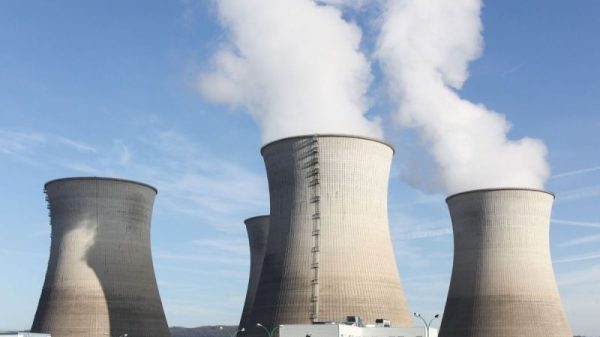Stainless steel accounts for the vast majority of nickel demand, but electric vehicle (EV) batteries represent a growing application for the base metal as the shift toward a greener future gains steam.
But while nickel’s long-term outlook appears bright, it may face headwinds in the short term. After a tough 2023, experts are projecting a surplus this year as weak usage coincides with strong output from top producer Indonesia.
What other dynamics are affecting nickel supply? If you’re interested in getting exposure to the market, you should be aware of the factors at play. To get you started, here’s a look at the top nickel-producing countries.
Figures are based on the latest US Geological Survey data. Read on to learn more.
1. Indonesia
Mine production: 1.8 million MT
Claiming first place for production by a long shot, Indonesia is a prime example of a country wanting to get in on the exploding market for nickel. Its output of the base metal has grown tremendously from 2017’s number of 345,000 metric tons (MT) to a whopping 1.8 million MT in 2023. Indonesia also hosts 55 million MT of nickel reserves.
The nation is actively building out its EV battery industry, and Indonesia’s close proximity to China, the world’s current leader in EV manufacturing, makes for an ideal setup. In May 2021, the country welcomed the commissioning of its first plant to process nickel for use in EV batteries. Dozens more such projects are reportedly in the pipeline, according to East Asia Forum. ‘In just three years, Indonesia has signed more than a dozen deals worth more than $15 billion for battery materials and EV production with global manufacturers,’ Euronews reported.
Major auto maker Ford (NYSE:F) announced in December 2023 that it is taking a direct stake in the proposed Pomalaa battery nickel plant, which is slated to begin production in 2026.
2. Philippines
Mine production: 400,000 MT
The Philippines has been one of the top nickel-producing countries for quite some time, as well as a nickel ore exporter. Another country with close proximity to China, the Philippines currently has more than 30 nickel mines, including Rio Tuba, operated by Nickel Asia, one of the nation’s top nickel ore producers. After taking a small hit between 2017 and 2018, when nickel production fell from 366,000 MT to 340,000 MT, the Philippines increased its nickel output to 420,000 MT in 2019. The upward trend was seemingly short-lived as the country continues to deal with record rainfall that has flooded mining operations. In 2022, the archipelagic country saw its nickel output slip to 345,000 MT.
2023 was a big year for recovery as the country’s nickel mines managed to increase their output to 400,000 MT. That resurgence could continue as two of the Philippines’ biggest nickel producers, Nickel Asia and Global Ferronickel, are planning to invest about a combined US$2 billion to build new nickel-processing plants, as per Bloomberg.
3. New Caledonia
Mine production: 230,000 MT
The economy of this French territory just off the coast of Australia depends heavily on the price of nickel. Although its production has decreased in recent years, dropping from 220,000 MT in 2019 to 190,000 MT in 2022, output picked up steam in 2023 to land at 230,000 MT, giving New Caledonia the third spot over Russia.
More recently, New Caledonia’s nickel industry has been plagued by rising energy costs and sociopolitical unrest. This February, major miner Glencore (LSE:GLEN,OTC Pink:GLCNF) made the decision to shutter its Koniambo nickel mine and put it up for sale. The company cited high operating costs and a weak nickel market.
Given these circumstances, the French government has offered a 200 million euro bailout package for New Caledonia’s nickel industry. But the move hasn’t gone as planned, with trader Trafigura deciding not to contribute to the bailout of Prony Resources Nouvelle-Calednie and the Goro mine, in which it has a 19 percent stake.
As of mid-April, the situation remained in limbo.
4. Russia
Mine production: 220,000 MT
Even though it holds the fourth spot on this list of the world’s top nickel producers, Russia has seen its nickel output drop in the past few years. In 2018, the nation’s nickel output totaled 272,000 MT, but it came in at 220,000 MT in 2023.
Russia’s Norilsk Nickel (OTC Pink:NILSY,MCX:GMKN) is one of the world’s largest nickel and palladium producers. Nornickel owns nickel reserves on the Taymyr Peninsula in Siberia and the Kola Peninsula in Northwest Russia.The company saw its production decline by 5 percent in 2023, and is expecting further declines in 2024, reported Retuers. ‘In 2024, we expect that risks related to an adverse geopolitical situation will continue to impact our operations,’ said Senior Vice President and Operational Director Sergey Stepanov. ‘Furthermore, this year we are planning capital repairs of the flash smelting furnace #2 at Nadezhda Metallurgical Plant.’
5. Canada
Mine production: 180,000 MT
Canada’s nickel production declined from 180,000 MT in 2019 to 143,000 MT in 2022. However, its nickel producers turned it around in 2023 to yet again post 180,000 MT in output of the metal. The country’s Sudbury Basin is the second largest supplier of nickel ore in the world, and Vale’s (NYSE:VALE) Sudbury operation is located there.
Another key nickel producer in Canada is Glencore, which owns the Raglan mine in Québec, as well as the Sudbury Integrated Nickel Operations in Ontario. The major miner’s Sudbury site includes the Nickel Rim South mine, the Fraser mine, the Strathcona mill and the Sudbury smelter.
In February, Canada Nickel Company (TSXV:CNC,OTCQX:CNIKF) said it is planning to develop a US$1 billion nickel processing plant in Ontario, which once complete would be North America’s largest.
Canada’s nickel industry stands to benefit from the US Inflation Reduction Act which promotes the sourcing of critical minerals for EV batteries from countries with which the US has free trade agreements or bilateral agreements.
6. Australia
Mine production: 160,000 MT
Australia, another top nickel-producing country, saw its production increase slightly from 155,000 MT in 2022 to 160,000 MT in 2023. One top miner in the country is BHP (NYSE:BHP,ASX:BHP,LSE:BHP) with its Nickel West division.
Australia’s largest nickel mines also include First Quantum Minerals’ (TSX:FM,OTC Pink:FQVLF) Ravensthorpe, and Glencore’s Murrin Murrin. Low prices have wreaked havoc on nickel mining in the country, leading to reduced or sidelined operations at six different nickel facilities in the country starting in December 2023, including Ravensthorpe. The situation was enough to prompt the Australian government to add nickel to its critical minerals list.
Like Canada, Australia is considered a potential benefactor of the US Inflation Reduction Act’s emphasis on sourcing battery materials from nations with free trade agreements or bilateral agreements with the US.
7. China
Mine production: 110,000 MT
China’s nickel production has remained relatively consistent in recent years. In addition to being a top nickel-producing country, China is the world’s leading producer of nickel pig iron, a low-grade ferronickel used in stainless steel. Jinchuan Group, a subsidiary of Jinchuan Group International Resources (HKEX:2362), is a large nickel producer in China.
China’s key role in stainless steel production means that it also influences nickel price dynamics. This was a key factor in 2023 as Indonesia’s surplus weighed on the market, as China is a major importer of the country’s nickel.
According to a US Geological Survey report, by early 2023, ‘the surplus had cascaded into an excess of nickel sulfate causing numerous companies in China to convert nickel sulfate to Class I metal, which was expected to add more than 150,000 tons of Class I metal capacity by yearend 2024.’
8. Brazil
Mine production: 89,000 MT
In recent years, Brazil’s nickel production has trended upward from 74,400 MT in 2019 to 89,000 MT in 2023. Brazil’s nickel project pipeline has a planned CAPEX of US$1.06 billion through 2025.
Vale, a major producer based in Brazil, sold the Jaguar nickel project in the Carajás mineral province to Centaurus Metals (ASX:CTM,OTCQX:CTTZF) in April 2020. The project hosts a resource of 40.4 million MT at 0.78 percent nickel, totaling 315,000 MT of contained nickel. Jaguar was one of three mining projects selected by the Brazilian government to receive support in obtaining environmental licenses.
9. United States
Mine production: 17,000 MT
Lastly, US nickel production has increased from 2019’s mark of 14,000 MT to 17,000 MT in 2023. The Eagle mine is the only primary nickel-mining property in the US. The asset, located on the Yellow Dog Plains in the Upper Peninsula of Michigan, is a small, high-grade nickel-copper mine owned by Lundin Mining (TSX:LUN,OTC Pink:LUNMF).
Nickel is included on the US’ critical minerals list, and in September 2023, under the Defense Production Act, the US Department of Defense awarded US$20.6 million to Talon Metals (TSX:TLO,OTC Pink:TLOFF) for further exploration and mineral resource definition at its Tamarack nickel-copper-cobalt project in Minnesota.
FAQs for nickel production
How is nickel mined and processed?
How nickel is mined and processed depends upon many factors, such as the size, grade, morphology and depth of the nickel deposit that’s under consideration. While lateritic nickel deposits are generally mined from open pits via strip mining, sulfide nickel deposits are often mined using underground extraction methods.
After mining, nickel ore is processed into higher-grade concentrates through crushing and separating nickel-bearing material from other minerals using various physical and chemical processing methods. Next, the concentrates are smelted in a furnace before the final stage of refinement using pyrometallurgical and hydrometallurgical processes.
How bad is nickel mining for the environment?
Nickel mining involves serious environmental concerns, including air and water pollution, habitat destruction, community displacement, wildlife migration pattern disturbances, greenhouse gas emissions and carbon-intensive energy use. Nickel-mining companies looking to supply the EV market are feeling the pressure to lessen the environmental footprint of their operations.
Securities Disclosure: I, Melissa Pistilli, hold no direct investment interest in any company mentioned in this article.







































